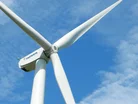McKinsey Warns of Energy Transition Hurdles Despite Progress

Despite widespread adoption of wind, solar power and EVs, the journey to net zero is only just beginning.
New research from McKinsey Global Institute (MGI) reveals that just 10% of the physical infrastructure needed for a net-zero future has been deployed, highlighting the scale of the challenge ahead.
MGI highlights that the transition is not merely theoretical—it requires real, physical transformation across multiple sectors.
Tiago Devesa, Senior Fellow at MGI, says: "We wanted to flip the paradigm in this report and focus on the physical realities—the nuts and bolts—in the here and now. What are the technologies, supply chains and infrastructure we need to run the high-performance, low-emissions energy system of the future?”
This transition covers seven key areas: power, industry, mobility and beyond, involving 60,000 power plants, 1.5 billion vehicles and two million kilometres of oil and gas pipelines.
With so much to overhaul, McKinsey has identified 25 major challenges in these domains, categorising them into three levels of difficulty.
While renewable energy and EV adoption are gaining momentum, McKinsey found only 10% of the necessary physical assets to meet 2050 net-zero commitments are in place.
Tiago warns: "This is not an abstract dollar number, goal, or theoretical pathway—it’s the physical world that exists around us today. So, despite all the momentum, we’re still in the very early stages of the energy transition.”
Breaking down barriers to net zero
McKinsey’s research reveals that reaching net zero is not impossible, but requires navigating a mix of straightforward and complex challenges.
MGI Partner Mekala Krishnan, who led the research, continues: “Half of the energy system-related emissions are in what we call Level 1 and Level 2 challenges—things that are relatively easy to solve.
"It’s a matter of how to best deploy mature technologies. But the remaining 50% are what we call Level 3—the harder challenges.”
The harder challenges, such as hydrogen development, carbon capture and industrial decarbonisation, are where progress lags most.
Adoption in these areas is far behind where it needs to be.
“We’re sometimes at 1% deployment or even less of where we will eventually need to be,” Mekala explains.
For example, producing low-emissions steel is still in its infancy. Scaling this technology requires retrofitting large facilities that process millions of tonnes of steel globally.
Moreover, accessing the low-emission hydrogen and renewable power needed for these processes adds complexity.
“This illustrates what makes this work hard,” Mekala notes. “We see this in cement, plastics, ammonia: the consistent theme of technology performance gaps, massive scaling needs and entwined linkages.”
But not all is bleak. Tiago sees hope in areas where mature technologies are ready to be scaled.
“The average electric car being sold today can cover the needs of more than 70% of households and high-end models more than 90%," he adds.
"There’s still work to be done, but we’re close there. Another example is air-source heat pumps, which can serve the needs of over 95% of the human population no matter where they live."
These mature technologies—EVs and heat pumps—are crucial to decarbonising mobility and buildings, two significant contributors to carbon emissions.
Moving forward with a strategy
Achieving a full energy transition requires businesses to act strategically.
Mekala recommends that companies start by addressing the relatively simple Level 1 challenges, such as adopting EVs or retrofitting buildings for energy efficiency.
She emphasises the need to ask critical questions at each level of difficulty:
- For Level 1 challenges: What actions can be taken today to have an immediate impact?
- For Level 2 challenges: What constraints might arise in scaling and how do we prepare for them?
- For Level 3 challenges: Where can innovation or partnerships help solve the toughest problems?
As Krishnan puts it: “The more I work on this topic, the more I am fascinated by how—while we can often talk about individual technologies, sectors, companies or countries—at its core, what we're talking about is a system-wide transformation.”
In the end, McKinsey’s research reminds us that the energy transition is not a quick fix but a global overhaul requiring physical, financial and strategic efforts across every industry.
As Mekala aptly concludes: "We are not replacing the bulb; we are rewiring an entire house."
Make sure you check out the latest edition of EV Magazine and also sign up to our global conference series - Sustainability LIVE 2024.
EV Magazine is a BizClik brand.


